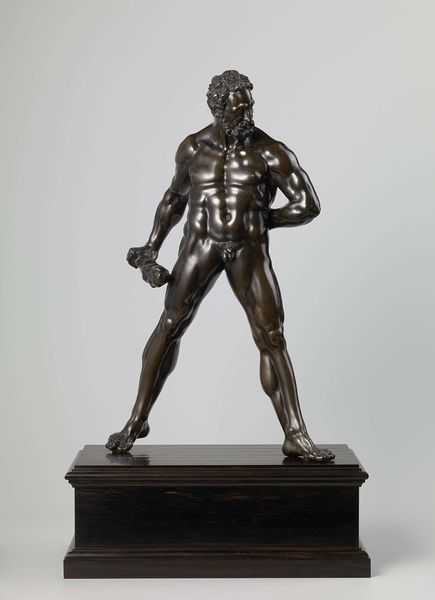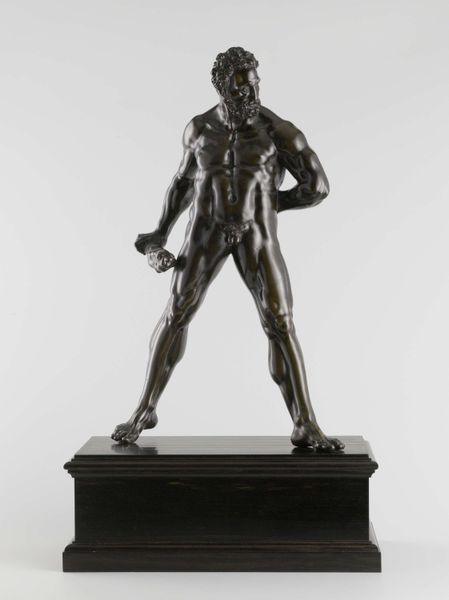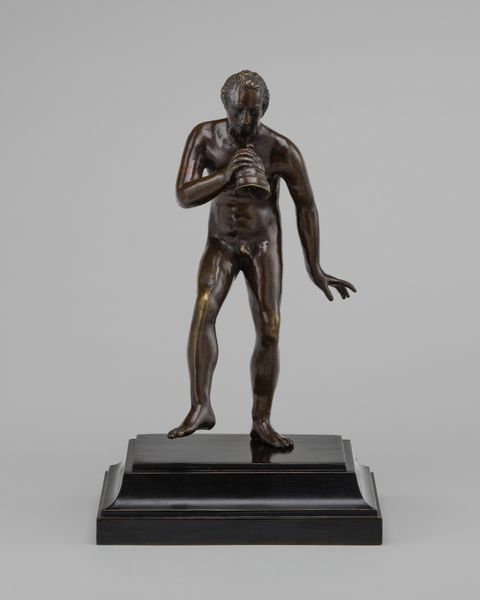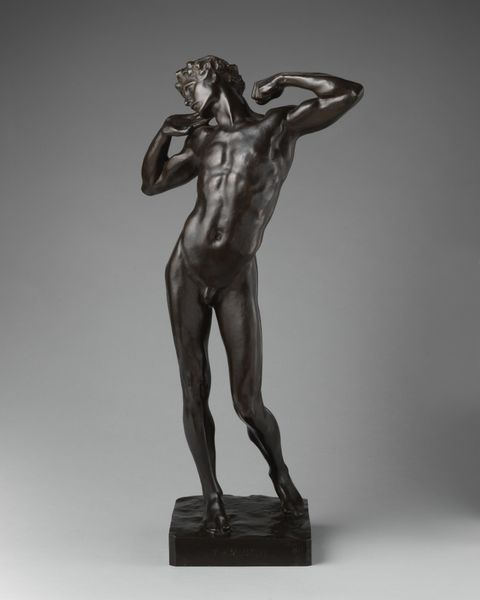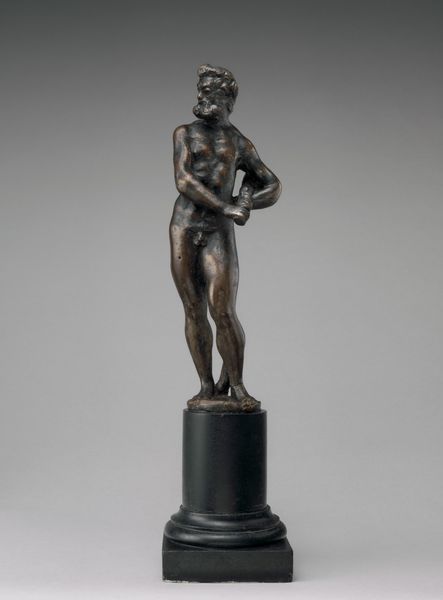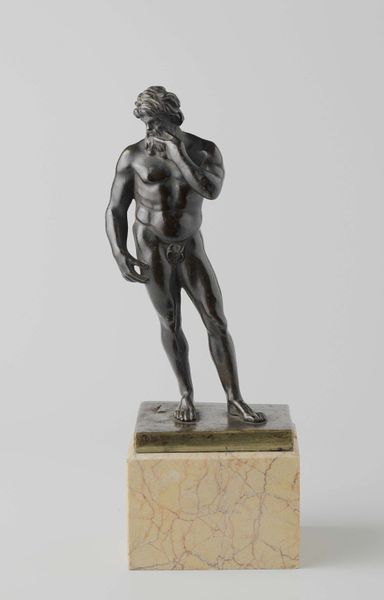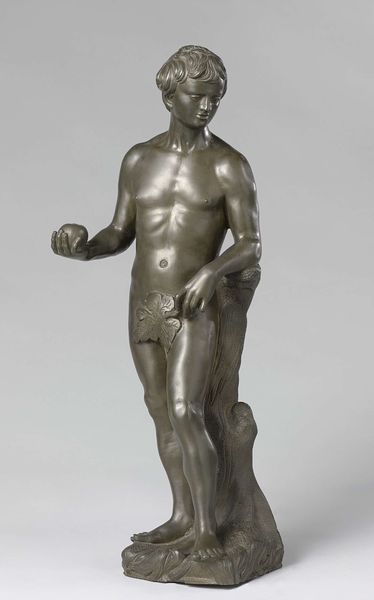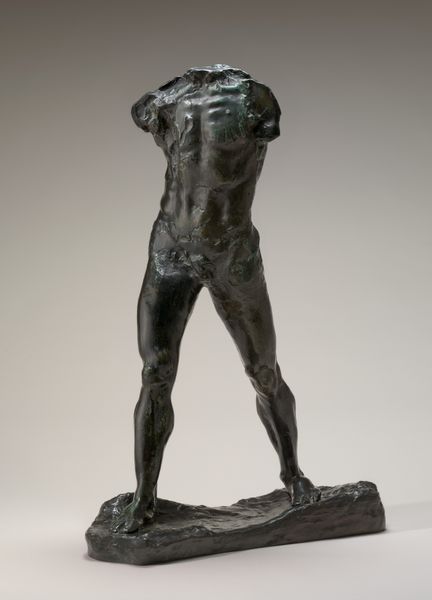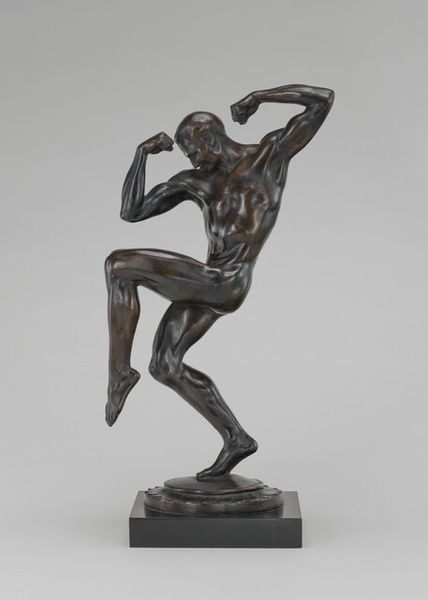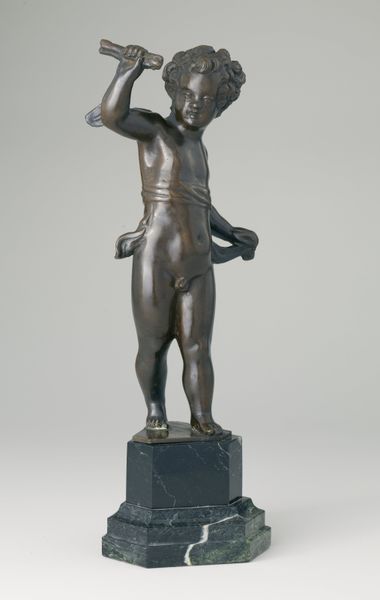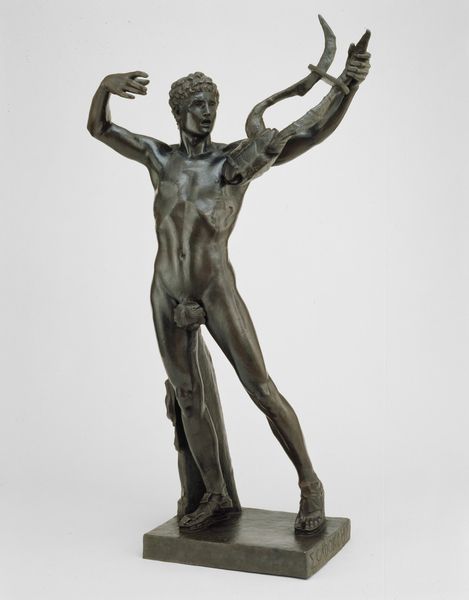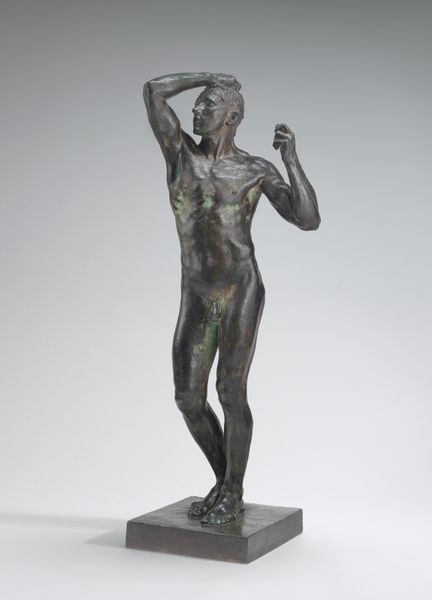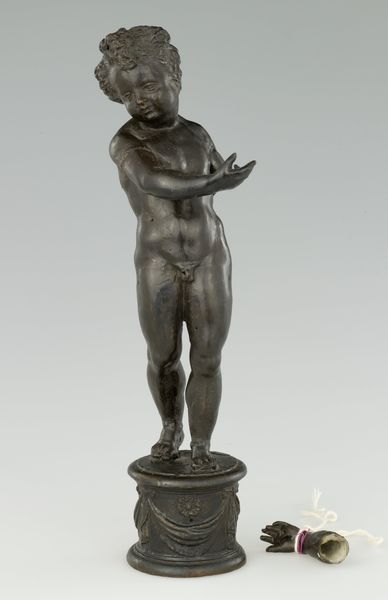
bronze, sculpture
#
sculpture
#
classical-realism
#
bronze
#
mannerism
#
figuration
#
sculpture
#
nude
Copyright: Rijks Museum: Open Domain
Curator: Hendrick de Keyser’s bronze sculpture, *Mercury*, created in 1611 and residing here at the Rijksmuseum, presents a fascinating synthesis of classical and Mannerist styles. Editor: Immediately striking is its poise, a tension between stillness and potential movement. The bronze is patinated to a rich, dark tone. Is that supposed to suggest Mercury's swiftness, as if captured mid-flight? Curator: Exactly. Note the contrapposto stance, inherited from classical sculpture, but also the somewhat elongated proportions, especially in the limbs, that betray the influence of Mannerism. Observe, too, the carefully rendered musculature. Editor: Which elevates and mythologizes male power. But considering Keyser's social milieu – early 17th century Amsterdam, a hub of commerce and colonial ambition – how might the depiction of Mercury, the god of commerce and communication, intersect with the emerging capitalist class? Curator: The figure embodies, structurally, a kind of aspirational humanism—a perfectly balanced synthesis of idealized form with real-world virtues prized by the ascendant Dutch merchant class. His gaze is directed outward and upward, echoing similar examples in sculpture in antiquity. Editor: Precisely. His averted gaze does invite us, the viewers, into a sort of dance, echoing the way power evades direct confrontation. And while ostensibly celebrating mercantile values, let's remember that this burgeoning capitalism was inextricably linked to systems of oppression and enslavement, hidden, so to speak, from Mercury's elegant averted eyes. What could the position of his feet suggest? He certainly appears at an almost imperceptible tip-toe! Curator: His fleetness. This bronze is so evocative because of the artist’s capacity for dynamism; the sculpture shows movement, even without literal motion. Even something as ostensibly “neutral” as contrapposto creates dynamism—all weight shifts of balance and counter balance of planes on different axes in space. The spiral turns and twisting poses which marked the High Renaissance. It’s what lends to a dramatic vitality here. Editor: Indeed, it speaks to the complexity embedded in even seemingly straightforward allegorical representations during periods of profound social change. Considering Mercury's posture, are we celebrating mobility or complicity? It presents some questions we must bear in mind as we progress through the gallery, thinking not only about commerce but about the history it facilitated, a history still unfolding. Curator: An extraordinary perspective indeed. I do think his bronze figure is more profound when you consider that balance – how, and why, he must embody mercantile drive.
Comments
rijksmuseum about 2 years ago
⋮
This statuette can be identified by his winged hat as Mercury, the messenger of the gods in Classical mythology. In his right hand, he originally held a caduceus, a wand with two serpents entwined around it. De Keyser gave the figure a beautiful S-curve based on the classic contrapposto pose. The weight is placed on the right leg, balanced by the left arm, with the other arm and leg remaining free.
Join the conversation
Join millions of artists and users on Artera today and experience the ultimate creative platform.
